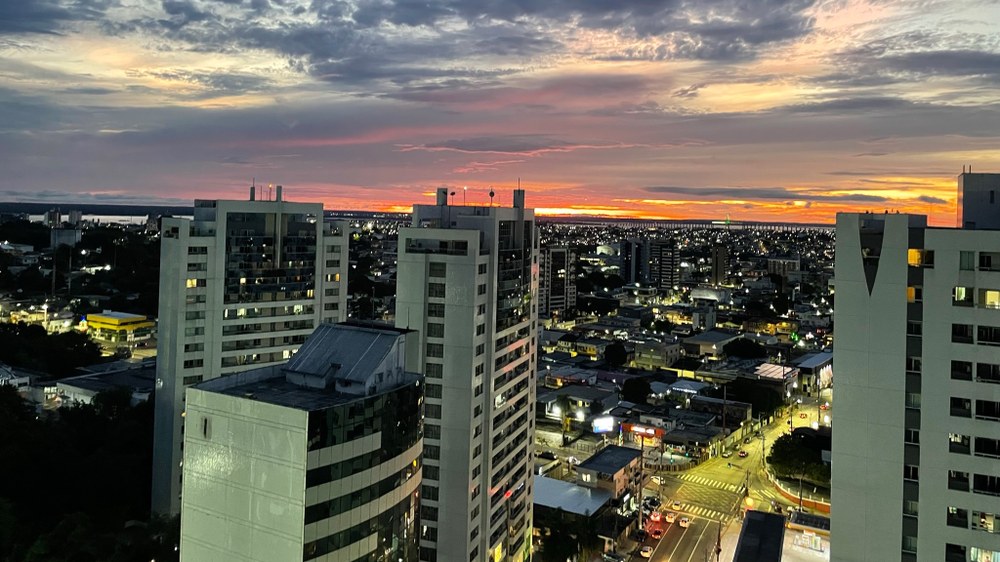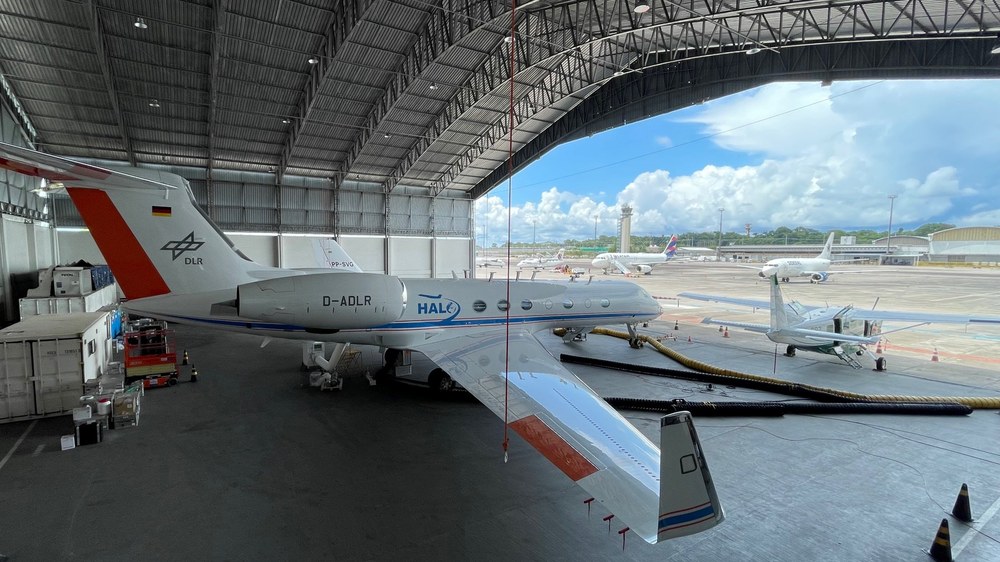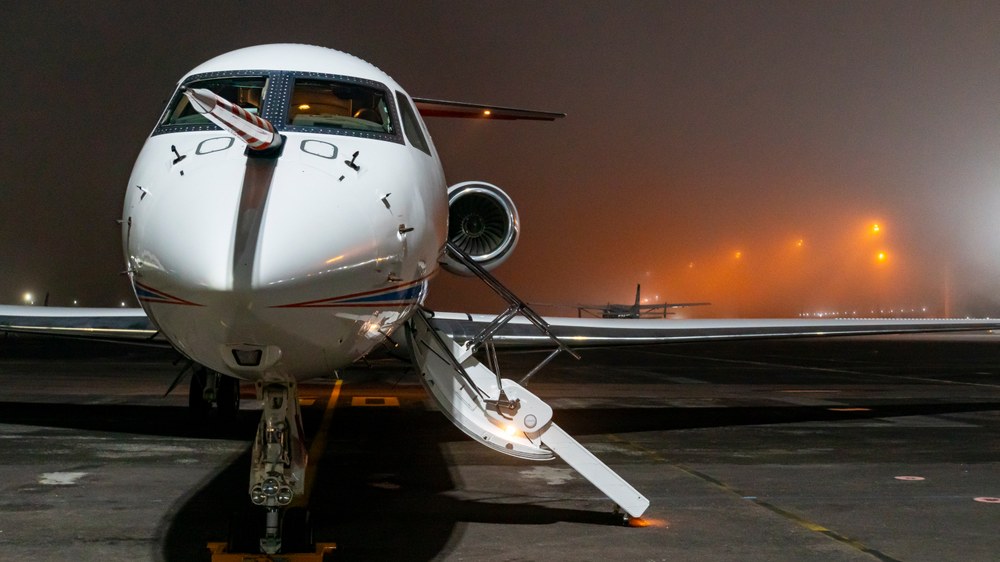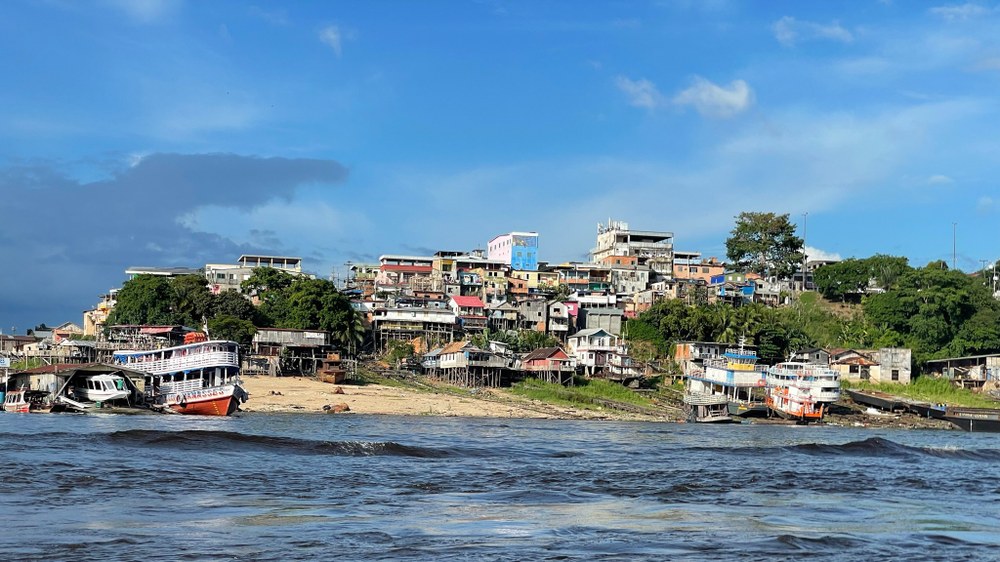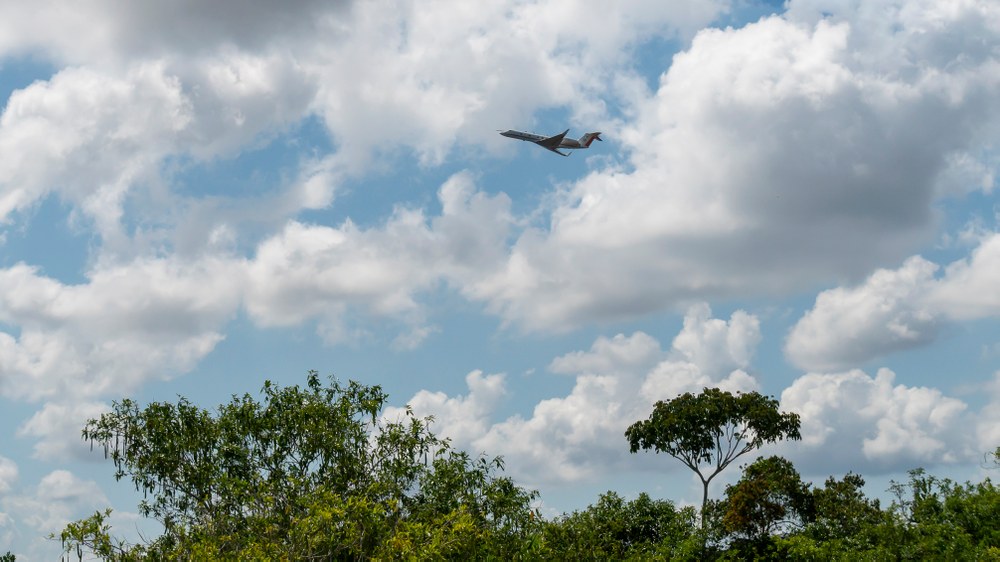Wings over the Amazon: project management for climate research
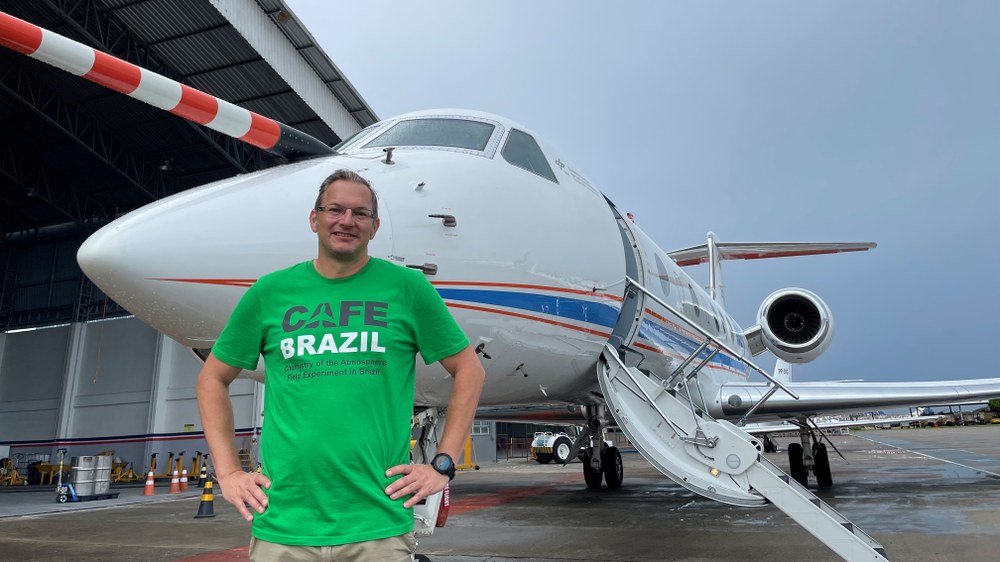
These days, Thomas Sprünken’s daily commute takes him through the urban traffic of Manaus. Outside, the temperature is around 30 degrees Celsius and humidity is over 80 percent. This bustling Brazilian city at the confluence of the Amazon River and the Rio Negro has no tram or metro system, so driving is the only way to get from A to B. Thomas, a DLR project manager, is on his way to work at the aircraft hangar at the Eduardo Gomes airport that currently houses HALO, the High Altitude and Long Range Research Aircraft designed to carry 16 climate research instruments over the tropical rainforest.
The CAFE-Brazil measurement campaign involves 20 measurement flights and around 70 scientists. Thomas and his team from the DLR Flight Experiments facility are ensuring that this complex campaign runs as smoothly as possible and captures important and unique data. His task: to keep all the plates spinning, keep a clear overview of the project and stay in constant contact with all those involved, from the technicians to the research teams and pilots.
A bird’s eye view of all areas
In the summer of 2019, the aerospace engineer moved from an aircraft manufacturer to DLR. Since then, the CAFE-Brazil mission has been part of his everyday work. Originally scheduled for 2020, the campaign had to be postponed due to the COVID-19 pandemic. "A year ago, we began to update all our plans, asking: has anything changed in terms of the scientific instrumentation? Are the agreements we made for renting the hangar in Brazil still valid? What about at the hotels, where the large team of scientists and engineers will need to live and work for several weeks?" explains Thomas.pagne aufgrund der Corona-Situation verschoben werden. „Vor einem Jahr haben wir dann damit begonnen, alles vorab Geplante aufzufrischen: Hat sich etwas an der wissenschaftlichen Instrumentierung geändert? Können die damals abgeschlossenen Mietverträge für einen Hangar am brasilianischen Flughafen so bestehen bleiben? Wie sieht es mit Hotels aus, in dem das große Team aus Wissenschaft und Technik für mehrere Wochen leben und arbeiten kann?“, zählt Thomas Sprünken auf.
Before HALO can take to the air, many individual tasks need to be carried out, ranging from cost calculations with performance specifications to the installation of instruments in the aircraft and their approval under aviation law, from rental contracts, route planning, logistics and customs clearance to coordination with local authorities. Costing and contract negotiations with partners, such as the Max Planck Institute for Chemistry in this case, are also on the project manager's to-do list; for many other things, the DLR Flight Experiments facility has dedicated personnel.
Every project is unique
"For my job, I don't really need to be able to do a lot of the things I oversee." In other words, he doesn't have to be able to maintain an aircraft himself – but he does need to ensure that the maintenance has been arranged according to plan and that all documents are available. He doesn't have to plan and apply for flight routes – but he must make sure that communication flows between the mission planning, the pilots and the client, and that the optimal campaign is implemented. A flight campaign is the result of well-oiled teamwork: only when everything has been meticulously prepared in accordance with the regulations may a research aircraft take off. The responsibility for the interaction between all those involved lies with the project management. How much effort and time is needed to coordinate and implement the project also depends on the country in which the measurement campaign is being carried out.
Precise planning and quick improvisation
Brazil and Manaus, the city in the heart of the rainforest, did not make it easy for the DLR team: simply getting to the site took the nine-member team through multiple airports. Because of the distance, HALO had to stay overnight in Cabo Verde and be prepared for its onward flight by DLR technicians who had travelled there. Then, for reasons that cannot be explained, it sometimes takes longer for the Brazilian authorities to clear flight routes, meaning that HALO then takes off late for its measurement flight. Thomas has to use the perfect mixture of precise planning and quick improvisation to ensure the measurement campaign stays on track. "Everyone knows that not all the processes on site work the way you planned them when you were sitting at your desk."
Goodbye office; hello hotel and aircraft hangar
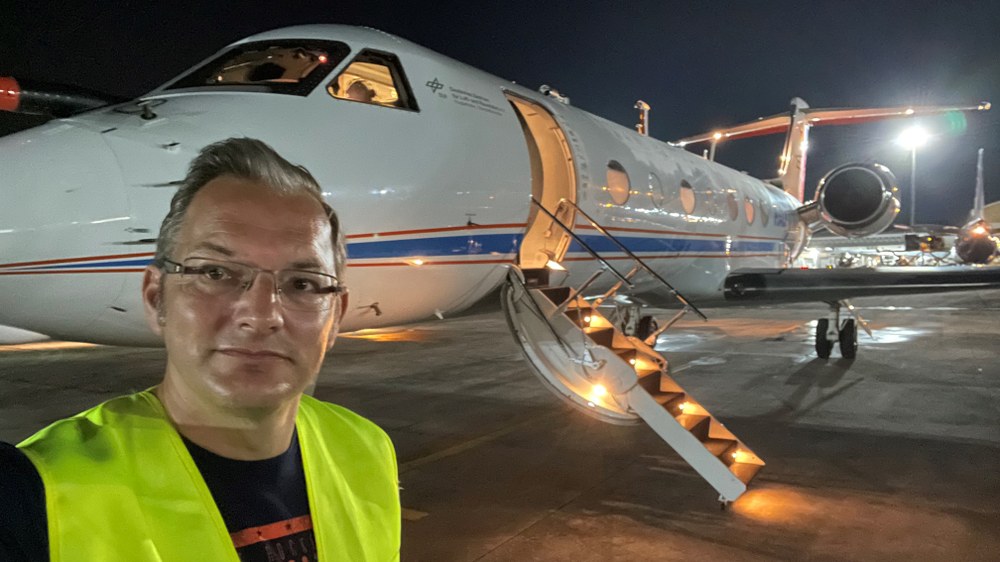
During the campaign, the project manager's ‘office days’ alternate with flight days at the aircraft hangar. When HALO is on the ground – for example because the pilots have to observe prescribed rest periods or instruments have to be calibrated or serviced – Thomas is busy with planning, emails, telephone calls and briefings during normal working hours. If a flight day is scheduled, he drives to the airport hours before departure time and is the contact person there for the scientists who are preparing their instruments for the flight, as well as for his team, who ready the aircraft for the eight- to nine-hour flight. HALO is a long-haul aircraft for atmospheric research and Earth observation. The flying days are long and complex, starting early in the morning or late in the evening – in the case of night flights – and are exhausting for everyone involved. The working weeks are intense: the weekend is not off-limits and the team only get one day off in every seven. All resources are scheduled as much as possible to optimise the measurement campaigns. HALO is also equipped to the last centimetre with instruments for CAFE-Brazil; besides the pilots and the technician, there is only room for four scientific staff.
Sometimes Thomas sets up his mobile office in the hangar on flight days; other days he drives back to the hotel, works there, rests a bit if necessary and then returns to the hangar in the evening when the plane is due to land. "Then there are long days until all the scientific data is backed up and the instruments calibrated after HALO returns." It's mobile, flexible work, sometimes improvised, but always very precise, so that all the strands of the project stay together.
Making climate research possible
The goal of CAFE-Brazil is to obtain data on chemical processes in the atmosphere above the Amazon rainforest. The scientific partners want to better understand how air pollution affects the atmosphere and what role the rainforest plays in the Earth‘s system. "HALO is particularly used for cutting-edge topics related to the climate," explains Thomas. For him, the fact that different measuring instruments are used again and again on board the research aircraft in different places around the world is what makes his work so special. He has now led five campaigns at DLR as project manager. "What we make possible with our research aircraft is really fantastic.“
Tags:

